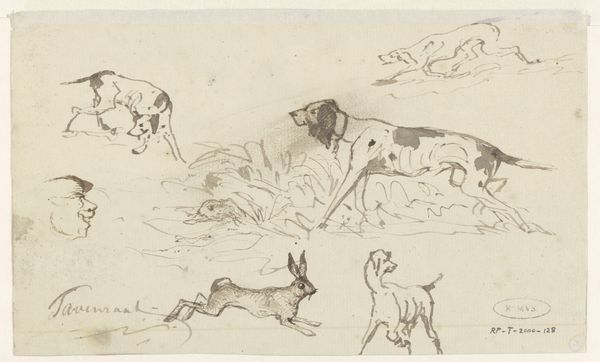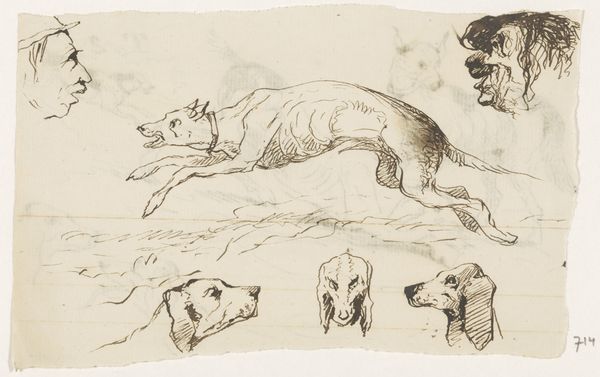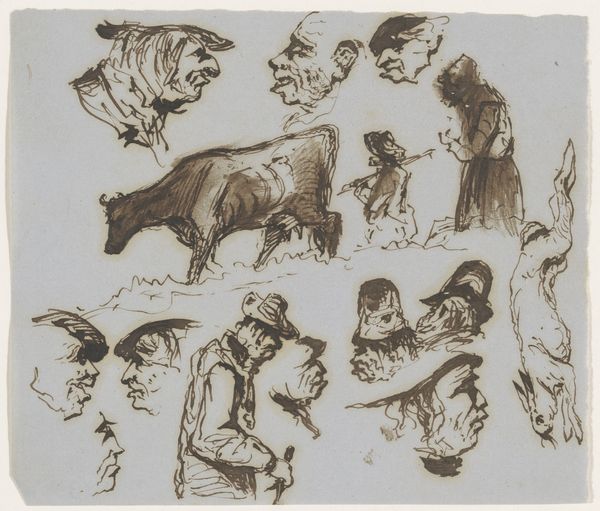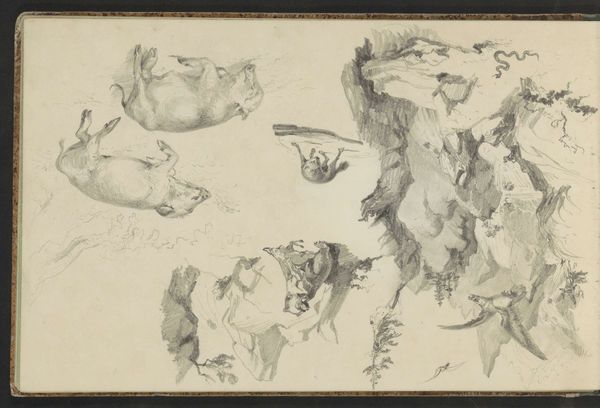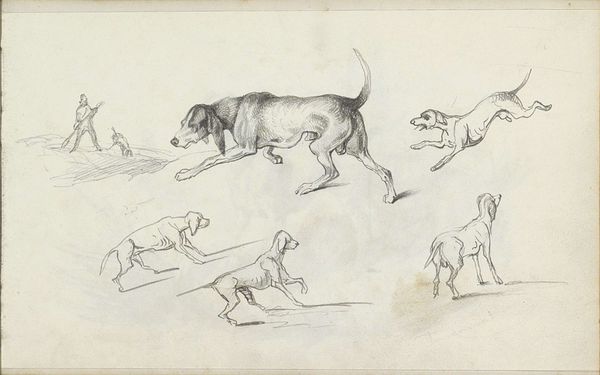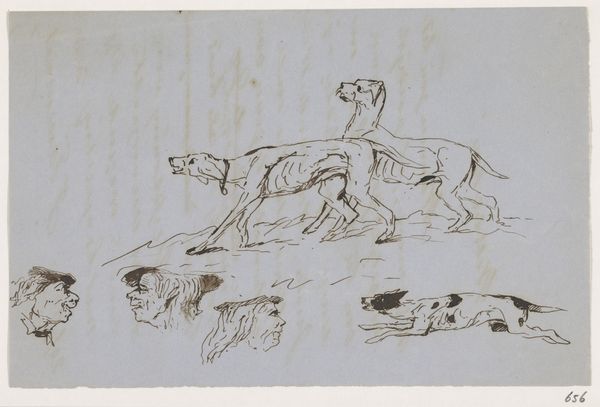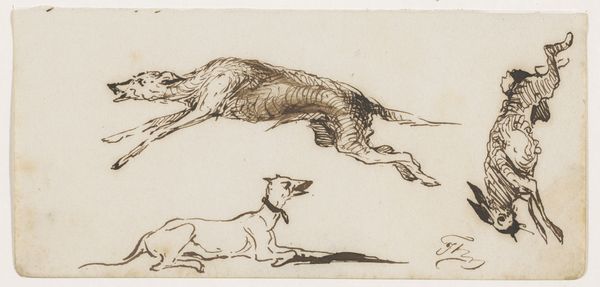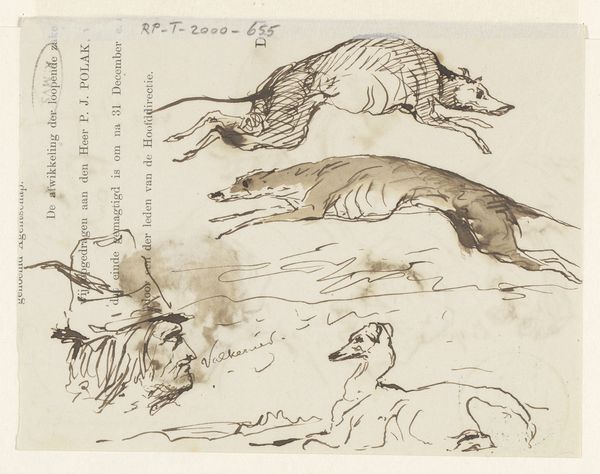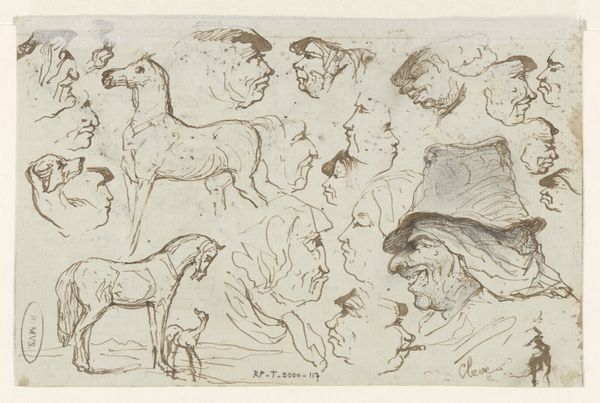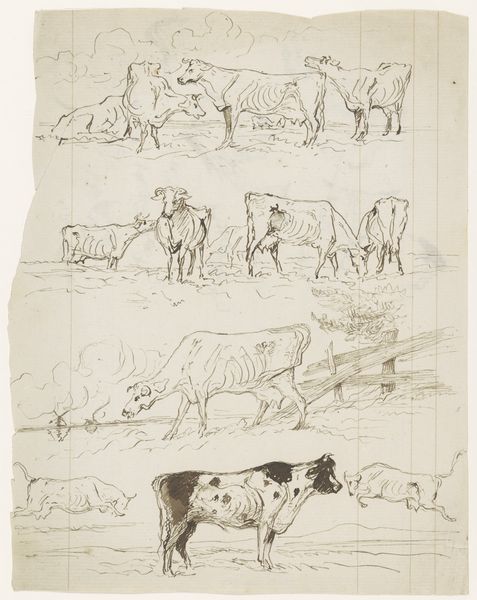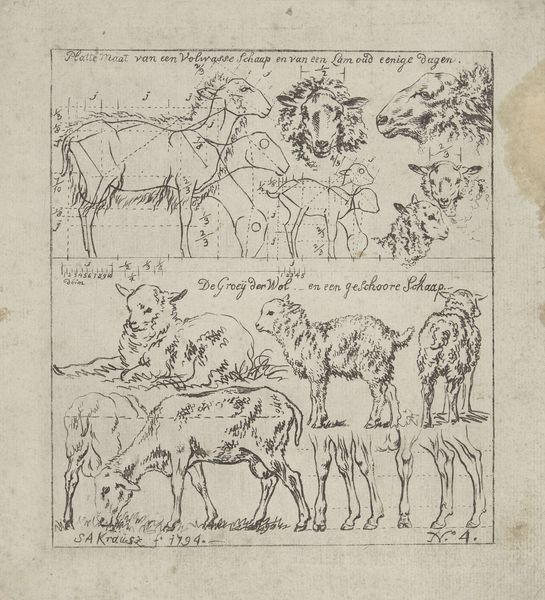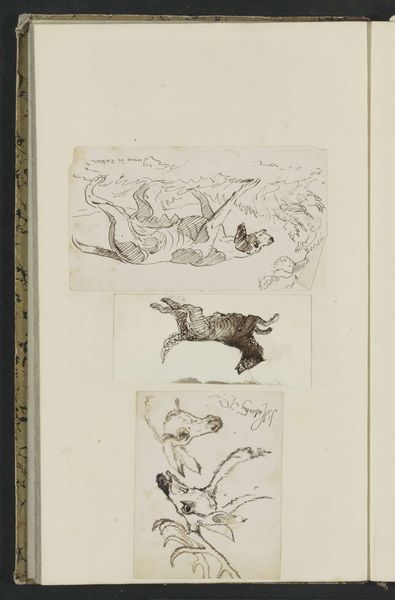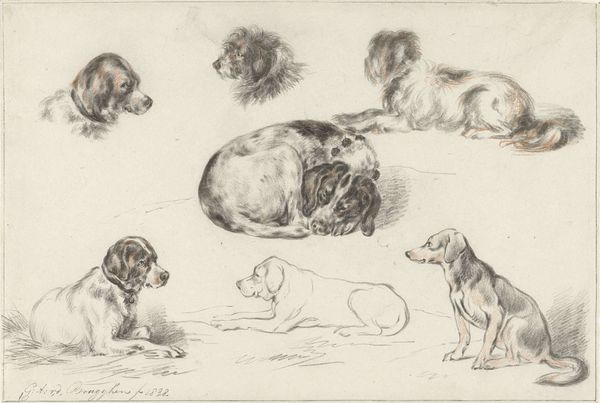
Dimensions: height 165 mm, width 200 mm
Copyright: Rijks Museum: Open Domain
Curator: Isn't this a delightful, if somewhat quirky, sketch? Johannes Tavenraat made this drawing in ink, pencil, and pen on paper somewhere between 1840 and 1870. It's called "Heads, Windmills, Hunting Dog and Hare." Editor: The hare looks rather worn out! Almost comical in its exhaustion. It gives a feeling of being observed in a raw, unfiltered state, a voyeuristic snapshot. Curator: I agree. The various heads, both human and animal, almost feel like studies for characters. Note the recurring motif of the windmill, small on the lower left and then repeated larger at the top—perhaps representing a specific location important to Tavenraat? Or perhaps representing something symbolic? Editor: Windmills often symbolize change and transformation, the harnessing of nature's power. The faces, caught in profile, remind me of character studies for some theatrical production, especially the rather stern face on the upper right corner. They all feel caught between realism and caricature. I think they give that 18th-19th century feeling that every facial detail betrays an aspect of the character’s personality, the romantic-era phisiognomy and personality type, almost like animals, where you can sense what they are through the form. Curator: Precisely! And what do you make of the hunting dog so prominently placed? Editor: Well, it anchors the composition, for one thing. But it is also an icon of fidelity, subservience. Note how all the profiles are in line with it: everything seems to come from its perception. I wonder if it all has to do with perception… even the exhaustion of the hare: maybe it's how the hunting dog saw them. Curator: That's a marvelous point. This sketchbook page almost serves as a study of the human (and animal) condition as reflected through perception and context. Editor: Ultimately, it's a playful but subtly incisive commentary through ink and paper—a brief glimpse into a unique artistic mind, full of energy. Curator: Indeed! These kinds of drawings give me hope: art history and museum galleries feel much more inviting when the intimate thoughts of their authors stay forever exposed.
Comments
No comments
Be the first to comment and join the conversation on the ultimate creative platform.
